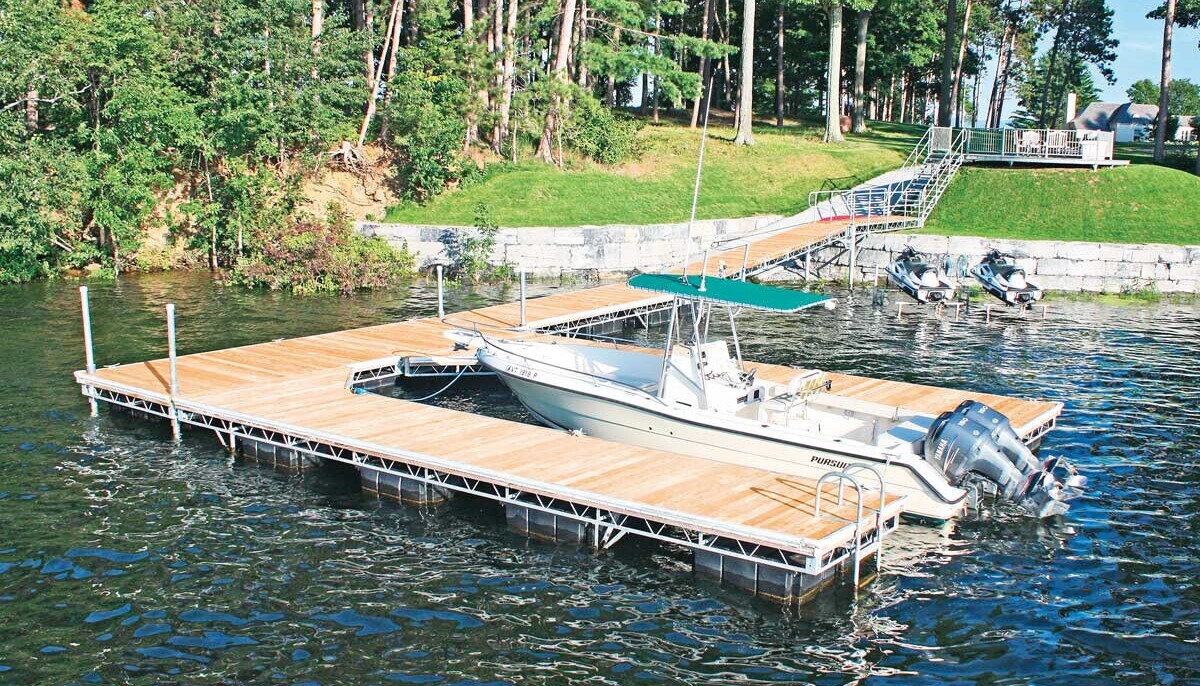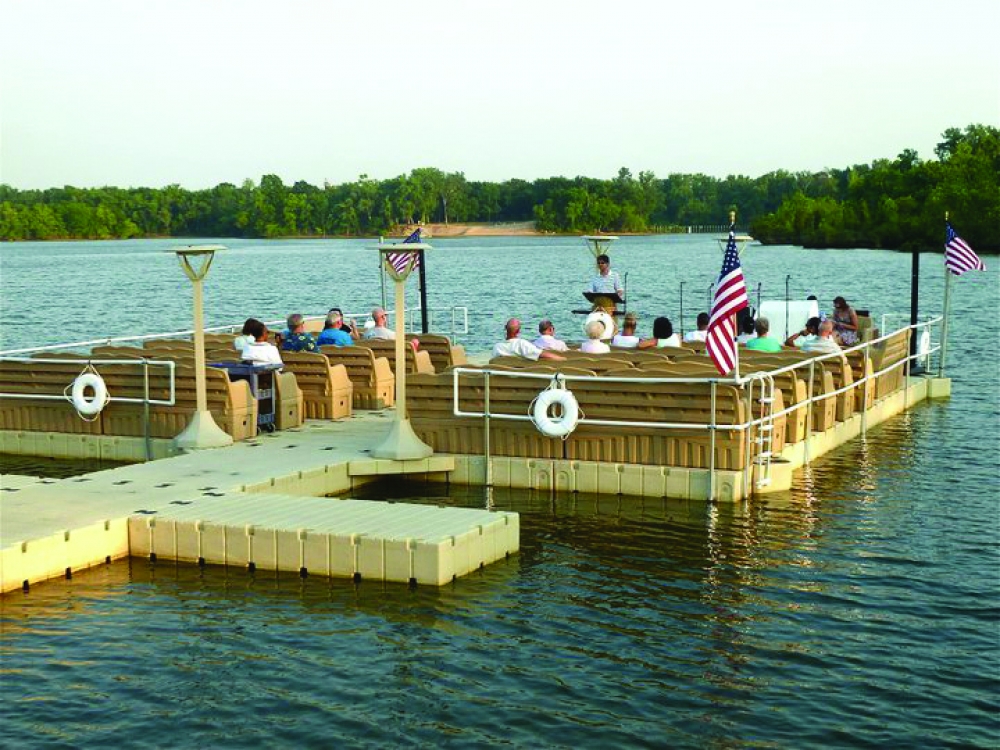Crafting Custom Solutions: Why a Floating Dock Builder is Vital for Distinct Requirements
Crafting Custom Solutions: Why a Floating Dock Builder is Vital for Distinct Requirements
Blog Article
Upgrade Your Waterside With Durable Floating Docks
Updating your waterfront with durable floating docks can considerably enhance both capability and visual appeals, providing a functional service for various water tasks. These structures are created to adjust to changing water degrees, making sure safety and access throughout the seasons. With an array of products available, including low-maintenance options and typical wood, picking the best dock can enhance your personal design and meet sensible needs. Nonetheless, understanding the subtleties of installation and upkeep is crucial for making certain longevity and efficiency. What factors should you think about when making this financial investment?
Benefits of Floating Docks
Floating docks offer a wide range of benefits that boost their charm for various maritime applications. Unlike typical set docks, floating docks rise and fall with the tide, guaranteeing regular ease of access for boats and boat regardless of ecological conditions.
Additionally, floating docks are easier to mount and relocate, supplying flexibility for seasonal or temporary usage. Their modular layout permits modification to fit particular needs, whether for exclusive marinas, property waterfronts, or industrial applications.
Furthermore, floating docks create very little disruption to the aquatic atmosphere, maintaining local environments and reducing the possibility of disintegration. They additionally offer improved safety and security and security for users, as their buoyant nature uses an extra forgiving surface than stiff frameworks.
In addition, floating docks can assist in a varied variety of activities, such as fishing, swimming, and leisure boating, making them a beneficial property for waterfront development. Their flexibility and usefulness make floating docks a preferred choice for a range of marine jobs.
Selecting the Right Products
Choosing proper materials for floating docks is vital to their longevity, performance, and overall effectiveness. When choosing materials, consider factors such as ecological exposure, maintenance requirements, and architectural honesty. Usual products consist of wood, plastic, aluminum, and composite options, each offering distinctive benefits and negative aspects.
Timber, while visually pleasing, needs routine maintenance to stop rot and degeneration. Pressure-treated timber can improve durability, but it may still surrender to water damages gradually. Plastic floats, typically made from high-density polyethylene, are resistant to corrosion and call for very little maintenance, making them an appealing option for low-maintenance applications.
Aluminum is an additional feasible choice, known for its toughness and light-weight homes. It is resistant to corrosion and can withstand extreme climate condition, although it may be a lot more costly than various other products. Compound products integrate the very best characteristics of timber and plastic, providing a low-maintenance and resistant option that imitates the appearance of timber without the associated downsides.
Eventually, the selection of product should line up with the intended usage, environmental considerations, and spending plan restrictions, making sure a functional and long lasting floating dock that satisfies your details demands.
Setup Refine Summary
The effective installation of a floating dock relies upon careful preparation and implementation, ensuring that it runs effectively in its designated setting. The initial step entails assessing site problems, consisting of water depth, shoreline functions, and dominating weather patterns, which will notify the dock layout and anchoring system.
Adhering to the site assessment, the next stage is to prepare the floating dock parts. This includes putting together the framework, safeguarding drifts, and attaching any type of needed equipment. It is crucial to guarantee that all connections are waterproof and durable to hold up against marine conditions.
Once the dock is assembled, the setup process begins with placing the dock in the water. This can entail a crane or other lifting devices, particularly for larger structures. Appropriate positioning is necessary for performance and security.

Upkeep Tips for Longevity
Normal maintenance is essential for making certain the long life and ideal efficiency of a floating dock. read here To attain this, begin with regular evaluations at the very least twice a year, concentrating on the integrity of the dock's structure, including the flotation protection devices and linking equipment. Search for indicators of wear, damage, or rust, and deal with any kind of issues quickly to protect against further degeneration.
Cleaning is another vital facet of maintenance. Eliminate particles, algae, and barnacles hop over to here from the dock's surface area to avoid slippery problems and keep visual appeal. Utilize a soft brush and a light detergent to avoid damaging the dock's materials.
In addition, make certain that the dock is properly anchored and protected to stand up to seasonal adjustments in water degrees and climate condition. Inspect the anchoring system for stability and make adjustments as necessary.
Enhancing Your Outdoor Visual
To produce an aesthetically appealing outdoor space, incorporating a floating dock can substantially improve the general visual of your waterside residential or commercial property. Floating docks are not just useful yet can additionally offer as a striking centerpiece that enhances the natural environments - floating dock company. Offered in different materials and designs, these docks can be tailored to match your building's building style and landscape
The addition of decorative components, such as incorporated illumination or trendy railings, further boosts the dock's visual appeal. Consider making use of all-natural wood coatings, which mix perfectly with the environment, or going with contemporary materials like light weight aluminum or composite outdoor decking that provide a streamlined, modern look.
Purposefully putting planters or seating areas on or around the dock can develop inviting rooms that motivate relaxation and satisfaction of waterside views. Furthermore, incorporating shades and structures that harmonize with your landscape will certainly produce a natural aesthetic throughout your exterior location.

Verdict

Updating your waterside with sturdy floating docks can significantly boost both functionality and aesthetics, supplying a functional service for numerous water tasks. Unlike conventional set docks, floating docks increase and loss with the trend, guaranteeing constant access for boats and watercraft no matter of ecological problems.Selecting suitable products for floating docks is important to their long life, performance, and overall efficiency.As soon as the dock is assembled, the installation process begins with placing the dock our website in the water.In summary, floating docks deal countless benefits, including adaptability to water level modifications and a range of product alternatives.
Report this page